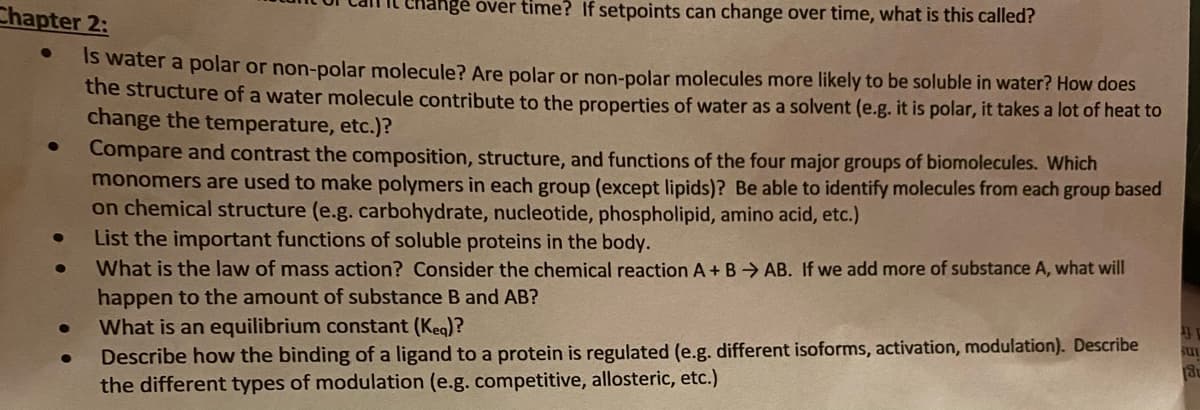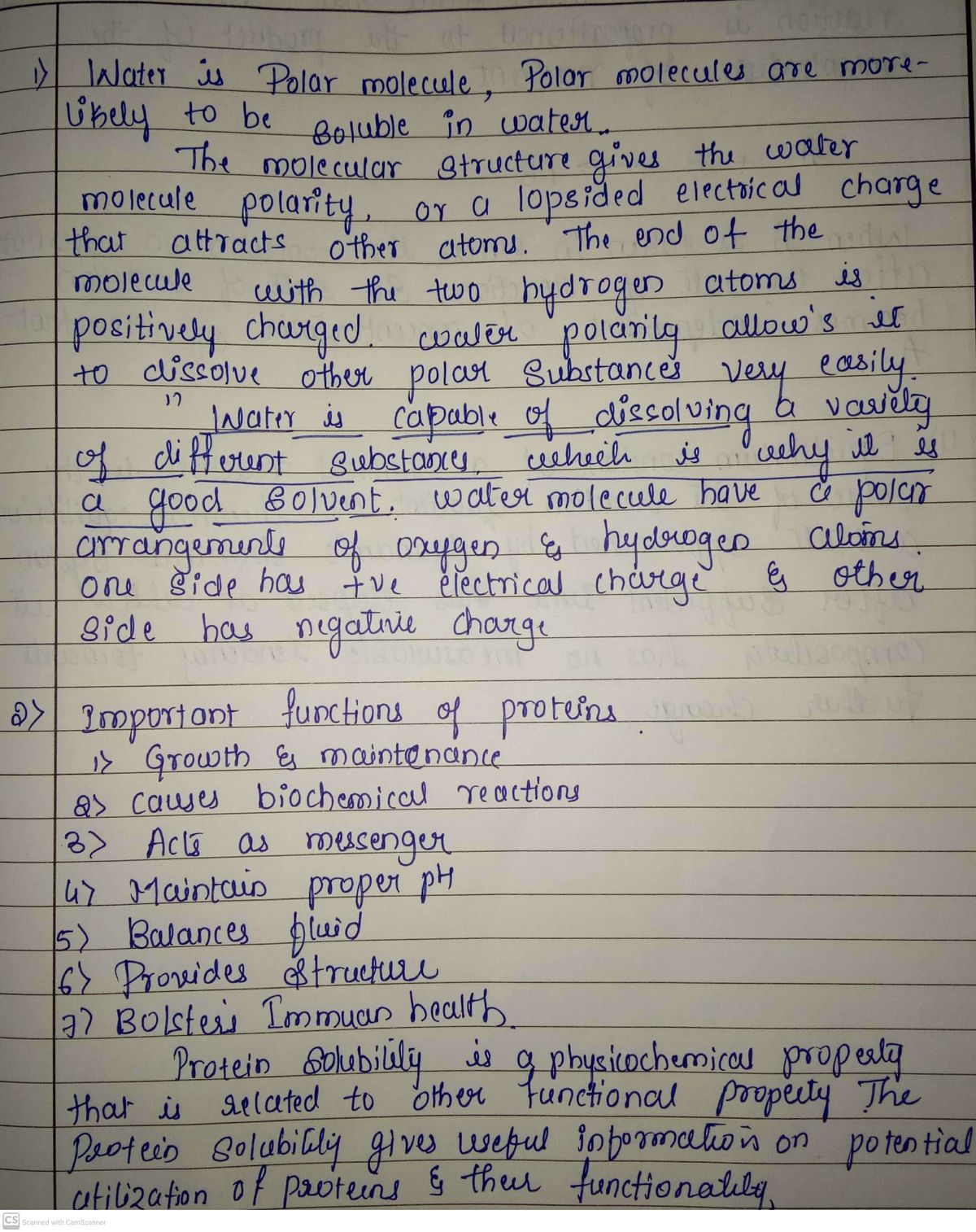IS water a polar or non-polar molecule? Are polar or non-polar molecules more likely to be soluble in water? How does the structure of a water molecule contribute to the properties of water as a solvent (e.g. it is polar, it takes a lot of heat change the temperature, etc.)? Compare and contrast the composition, structure, and functions of the four major groups of biomolecules. Which monomers are used to make polymers in each group (except lipids)? Be able to identify molecules from each group base on chemical structure (e.g.carbohydrate, nucleotide, phospholipid, amino acid, etc.) List the important functions of soluble proteins in the body. What is the law of mass action? Consider the chemical reaction A+ B → AB. If we add more of substance A, what will happen to the amount of substance B and AB? What is an equilibrium constant (Keg)? Describe how the binding of a ligand to a protein is regulated (e.g. different isoforms, activation, modulation). Describe modulotion lo g comnetitive allosteric etc )
IS water a polar or non-polar molecule? Are polar or non-polar molecules more likely to be soluble in water? How does the structure of a water molecule contribute to the properties of water as a solvent (e.g. it is polar, it takes a lot of heat change the temperature, etc.)? Compare and contrast the composition, structure, and functions of the four major groups of biomolecules. Which monomers are used to make polymers in each group (except lipids)? Be able to identify molecules from each group base on chemical structure (e.g.carbohydrate, nucleotide, phospholipid, amino acid, etc.) List the important functions of soluble proteins in the body. What is the law of mass action? Consider the chemical reaction A+ B → AB. If we add more of substance A, what will happen to the amount of substance B and AB? What is an equilibrium constant (Keg)? Describe how the binding of a ligand to a protein is regulated (e.g. different isoforms, activation, modulation). Describe modulotion lo g comnetitive allosteric etc )
Chapter4: Forces Between Particles
Section: Chapter Questions
Problem 4.86E
Related questions
Question

Transcribed Image Text:Chapter 2:
ange over time? If setpoints can change over time, what is this called?
IS water a polar or non-polar molecule? Are polar or non-polar molecules more likely to be soluble in water? How does
the structure of a water molecule contribute to the properties of water as a solvent (e.g. it is polar, it takes a lot of heat to
change the temperature, etc.)?
Compare and contrast the composition, structure, and functions of the four major groups of biomolecules. Which
monomers are used to make polymers in each group (except lipids)? Be able to identify molecules from each group based
on chemical structure (e.g.carbohydrate, nucleotide, phospholipid, amino acid, etc.)
List the important functions of soluble proteins in the body.
What is the law of mass action? Consider the chemical reaction A + B → AB. If we add more of substance A, what will
happen to the amount of substance B and AB?
What is an equilibrium constant (Keg)?
Describe how the binding of a ligand to a protein is regulated (e.g. different isoforms, activation, modulation). Describe
the different types of modulation (e.g. competitive, allosteric, etc.)
sui
Expert Solution
Step 1

Trending now
This is a popular solution!
Step by step
Solved in 2 steps with 2 images

Knowledge Booster
Learn more about
Need a deep-dive on the concept behind this application? Look no further. Learn more about this topic, chemistry and related others by exploring similar questions and additional content below.Recommended textbooks for you


Introductory Chemistry: A Foundation
Chemistry
ISBN:
9781337399425
Author:
Steven S. Zumdahl, Donald J. DeCoste
Publisher:
Cengage Learning

Chemistry: Matter and Change
Chemistry
ISBN:
9780078746376
Author:
Dinah Zike, Laurel Dingrando, Nicholas Hainen, Cheryl Wistrom
Publisher:
Glencoe/McGraw-Hill School Pub Co


Introductory Chemistry: A Foundation
Chemistry
ISBN:
9781337399425
Author:
Steven S. Zumdahl, Donald J. DeCoste
Publisher:
Cengage Learning

Chemistry: Matter and Change
Chemistry
ISBN:
9780078746376
Author:
Dinah Zike, Laurel Dingrando, Nicholas Hainen, Cheryl Wistrom
Publisher:
Glencoe/McGraw-Hill School Pub Co